MRM Research Roundup: End-of-February 2020 Edition
14 Min Read By MRM Staff
This edition of Modern Restaurant Management (MRM) magazine's Research Roundup features the National Restaurant Association's State of the Industry Report, food industry pressures, foodservice opportunities, influencer marketing, foot traffic analysis and the dining-out dollar.
2020 State of the Restaurant Industry
The National Restaurant Association released its 2020 State of the Restaurant Industry Report which examines key factors impacting the restaurant industry including the current state of the economy, operations, workforce, and food and menu trends across segments from quickservice to fine dining. The report is an authoritative look at the industry and its challenges and opportunities based on a range of national surveys of restaurant owners, operators, chefs and consumers.
Key findings regarding economic conditions include:
- Restaurant industry sales are projected to reach a record $899 billion in 2020, with the moderate four percent growth rate mirroring general economic conditions.
- Consumers will continue to be the driving force in the economy, buoyed by a healthy labor market and strong household balance sheets.
- Consumers’ pent-up demand remains elevated, with nearly half of all adults saying they want to use restaurants more frequently.
“Now in its eleventh consecutive year of growth, the restaurant industry is adapting to consumer preferences faster than ever before,” said Hudson Riehle, senior vice president, research and knowledge group, National Restaurant Association. “Consumers tell us they want to use restaurants more than they are now, and the challenge for the industry is meeting consumers where they want to be. We expect this year will see growth in off-premises options, technology that streamlines operations, and more restaurants that are talking about their increased sustainable and eco-friendly practices.”
We expect this year will see growth in off-premises options, technology that streamlines operations, and more restaurants that are talking about their increased sustainable and eco-friendly practices.
Opportunity lies in off-premises
Off-premises will be a prominent force of growth in 2020. To be successful, restaurant operators will look to strike the perfect formula of on- and off-premises for their business as consumers strive for convenience, but continue to look to the social escape that restaurants provide. When asked about ways in which restaurants could incorporate more technology, consumers primarily mention frictionless, convenience- and service-enhancing items, rather than people-eliminating items. Other key takeaways on operations include:
- Restaurant operators are generally positive about business conditions, but they anticipate ongoing challenges that impact both the top and bottom lines.
- Off-premises will be a major driver of sales growth in 2020 and beyond, and many restaurant operators are devoting more resources to this side of their business.
- Restaurant operators agree that the use of technology provides a competitive advantage, and as such are investing in customer-facing technologies that will enhance service and convenience for their guests.
Employment opportunities abound
The restaurant industry remains one of the economy’s most important employers – for a year or for a career. Sixty-three percent of adults report working in the restaurant industry at some point during their lives; 48 percent held their first regular job in a restaurant. Employee recruitment and retention continues to be a major challenge for operators in 2020, with low unemployment rates and growing job openings. However, of the job openings filled in 2019, nearly half of them were filled by either new entrants to the workforce or people promoted from other positions in the same restaurant. Other key statistics on the state of the workforce include:
More Jobs: The restaurant industry will provide a projected 15.6 million restaurant and foodservice jobs in 2020.
Good Jobs: The restaurant workforce is as diverse as the communities it serves, and the industry will offer up additional employment opportunities at all levels of the business this year.
Opportunity for All: Older adults’ representation in the restaurant workforce will continue to grow, as their numbers in the labor force are expected to rise sharply.
Consumers are embracing the industry more as they continue to shift their spending away from physical items and towards experiences.
Healthy, sustainable options increase alongside changing alcohol preferences
Consumer interest in healthy menu options will remain strong in 2020, and consumers will make decisions based on the availability of healthy offerings. Alcohol is a key driver of sales in the fine dining segment, with nearly two-thirds of orders including alcoholic beverages. In 2020, alcohol will expand further beyond this segment with operators in all but one category planning to increase their alcoholic beverage offerings to keep up with changing consumer tastes and preferences.
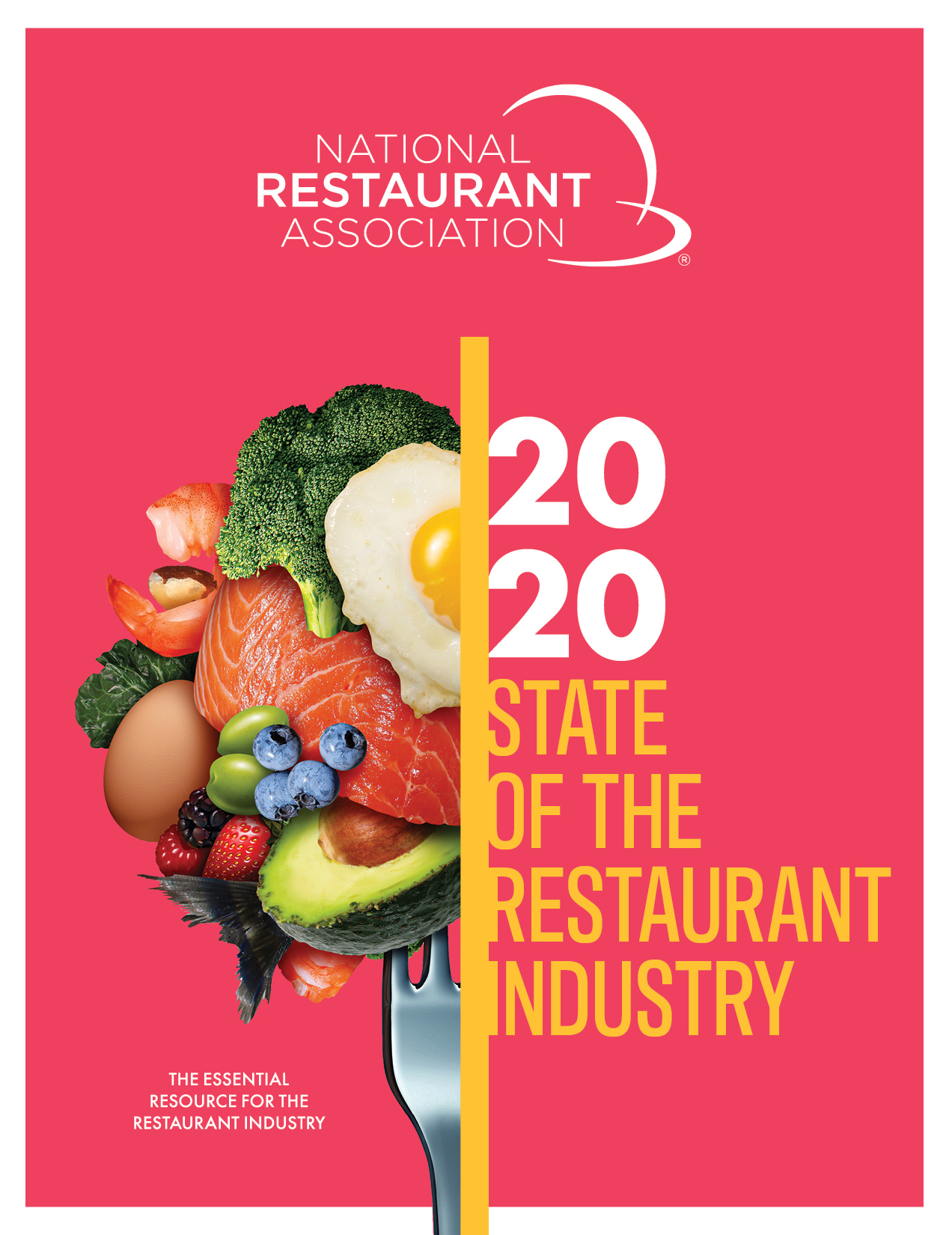
Key figures on food and beverage trends include:
- 76 percent of adults say they are more likely to visit a restaurant that offers locally sourced food and 79 percent of adults say they are more likely to visit a restaurant that offers healthy menu options.
- 65 percent of millennials say they are more likely to go to restaurants that offer locally sourced alcoholic beverages.
- 53 percent of chefs indicate that low-alcohol beers and cocktails will continue to rise in popularity in 2020.
“Consumers are embracing the industry more as they continue to shift their spending away from physical items and towards experiences. This opens channels of opportunity and growth in food, beverage, and technology. We’re excited to see how these trends and developments play out in 2020 and beyond,” said Riehle.
Click here for more information or to access the full report.
Food Industry Faces Consumer Pressures
The US food industry is facing increasing pressure to alleviate safety concerns, after a report launched suggested that almost half of Americans had actively changed their shopping habits in the last 12 months following a food scare.
The report, Food in 2020: What’s trending for US shoppers?, launched by global food safety certification experts, Lloyd’s Register, follows a survey of over 1,000 US consumers.
Highlighting the growing demands of consumers, the report also revealed serious concerns around food waste. Indeed, 88 percent of US shoppers see food waste as a ‘big problem’, while two-thirds don’t believe enough is being done by large food brands to tackle the growing issue.
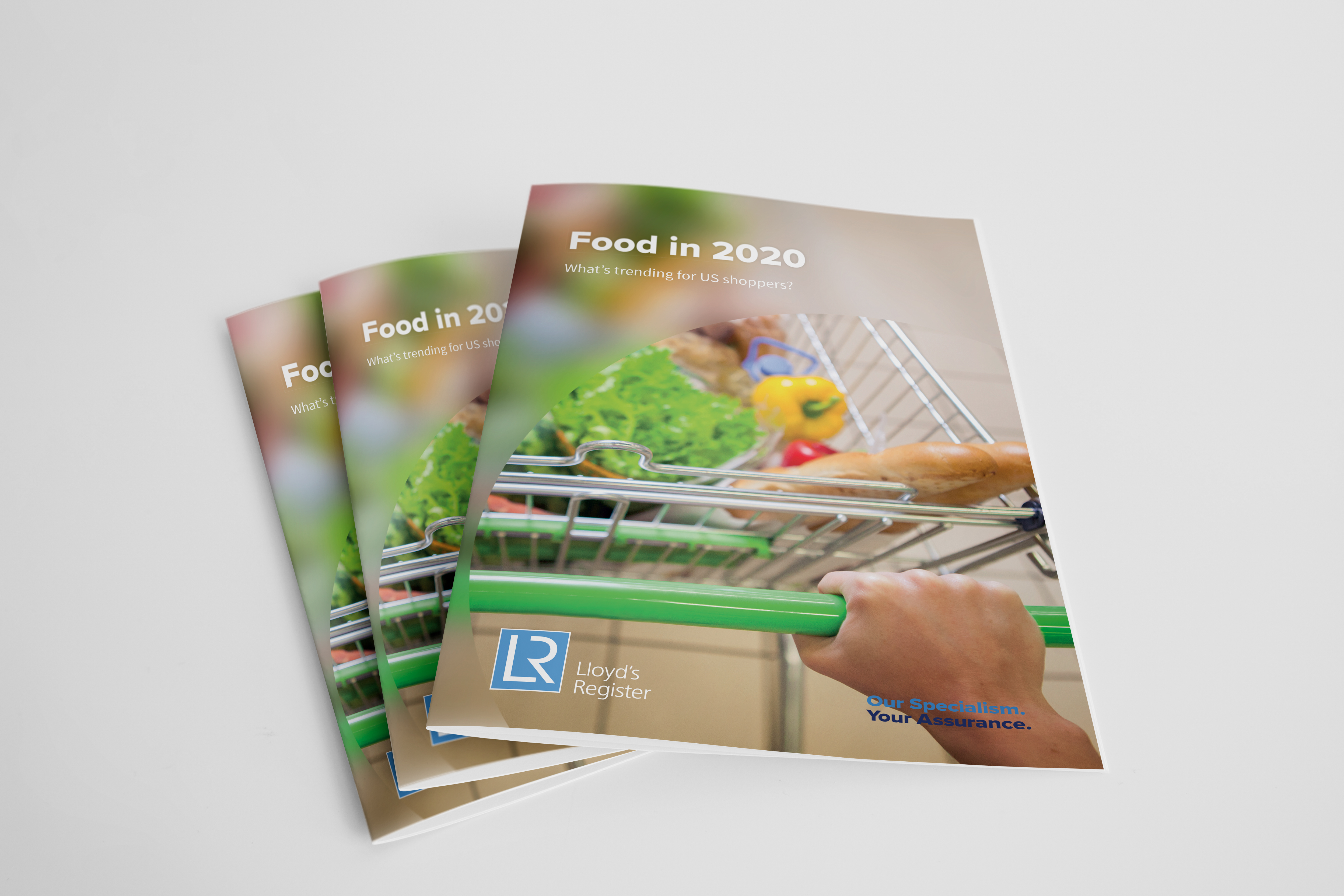
To add to these findings, 67 percent believe the world’s biggest food brands are not doing enough to tackle plastic waste. However, despite these concerns, only 18 percent of consumers consider food waste as a personal priority when choosing a food product. While demands on retailers and restaurants are clear, these results indicate a level of contradiction or conflict between consumer habits and expectations.
Stuart Kelly, Global Head of Commercial at Lloyd’s Register, commented: “The research provides a brief overview of the food shopping habits of US consumers. While there are some contradictions in place, the research reveals growing demands on retailers and restaurants relating to food waste, plastic use and safety concerns.
“One of the stand-out statistics that should raise alarm bells for the food industry is the willingness of consumers to actively change their shopping habits as a result of a food scare. As an industry, we understand that food processes are extremely safe, however the report suggests that negative headlines around safety is perhaps having a more significant impact on buying trends than first realised.
“The question we must ask now is, how can the food industry come together and overcome these barriers?”
The research also suggests a lack of confidence in labelling and food information, with only 48 percent saying they were ‘fairly confident’ that food listed as organically farmed is authentic.
Vegan products also come under the microscope, with the report showing how only one-fifth of respondents are very confident that vegan or plant-based alternatives do not contain meat. Perhaps surprisingly, only 37 percent believe these vegan products are a more environmentally-friendly choice when compared to meat, despite growing evidence of its green credentials.
Stuart comments: “Veganism continues to grow, but our research shows scepticism surrounding the products. Only one-third of respondents, for example, believe meat substitutes are a healthier option, while many are not entirely confident that they are suitable for a vegan diet.
“The reality is that the food we eat is the safest and most authentic it has ever been. This mistrust and credibility gap in consumers’ minds needs addressing and the food industry must come together to alleviate concerns. With a high percentage of US shoppers wanting to know the precise ingredients in all products, it is important for all suppliers to question how this can be achieved and what can be done to allay these doubts.”
A copy of the US Food Trends report can be downloaded here.
Opportunities in Food Service
Expectations for growth are fading in restaurant and other foodservice industries due to an increasingly challenging environment, according to a new L.E.K. Consulting study. In a survey of over 240 foodservice operators directly involved in purchasing decisions, only 56 percent say they expect the industry to grow over the next three years – down from 78 percent in 2017, when the survey was last fielded.
While rising food and labor costs are still top of mind, foodservice operators are seeing new challenges …
“While rising food and labor costs are still top of mind, foodservice operators are seeing new challenges,” says Manny Picciola, Managing Director at L.E.K. and coauthor of How Foodservice Operators Are Finding Opportunities to Fuel Growth. “They’re concerned about rapidly changing consumer preferences, which demand constant diversification of their menus, and an overcrowded online ordering and delivery market.”
More than a third (35 percent) of operators say rising food costs from suppliers is the biggest barrier to growth, while more than a quarter (26 percent) say higher labor costs due to cost-of-living increases and minimum wage laws is their top concern. The report notes that wage growth in the U.S. foodservice industry rose 5.3 percent between 2015 and 2018, compared with a 2.5 percent median rise of wages overall.
“Although sentiment among foodservice operators is less optimistic than in previous years, they are proactively taking steps to counter the headwinds they face,” says Rob Wilson, Managing Director at L.E.K. and report coauthor. “With the right strategies, operators will still be able to remain competitive and grow for the foreseeable future.”
They’re concerned about rapidly changing consumer preferences, which demand constant diversification of their menus, and an overcrowded online ordering and delivery market.
Some of the ways foodservice operators are growing sales, cutting costs and maintaining or increasing market share, according to the report, are:
- Reducing labor, limiting work hours and leveraging automation. To combat higher labor costs, 43 percent of foodservice operators say they are reducing the number of full-time employees on staff and 35 percent say they are limiting the number of hours all employees are asked to work. And 20 percent say they are using automation wherever they can.
- Using pre-prepared and private label products. With 41 percent saying the cost of labor is too high to prepare food in-house, operators are increasingly purchasing pre-prepared foods to offset costs. The prepared food category is expected to grow 17 percent year-over-year, surging from a seven percent rise in 2017.
“As the quality of private label products continues to rise – with consumers largely unaware of differences between private label and branded products – we’re seeing more operators shift to private label alternatives, especially for commodity items,” says Maria Steingoltz, Managing Director at L.E.K. and report coauthor.
Outsourcing delivery to third-party or operator-managed services. When it comes to delivery, operators are turning to third-party aggregators and delivery apps in their quest to acquire new customers and retain existing ones. Nearly three-quarters (74 percent) of all operators now offer online ordering, whether it’s outsourced or handled in-house. And half say they expect to increase delivery offerings over the next three years.
Employing digital tools. Operators are finding social media to be an invaluable tool to attract and retain customers. More than a third (34 percent) use Instagram and over half (57 percent) use Facebook. Twitter remains a potent force, as shown by Popeyes’ use of the platform to needle rivals and drive demand for its products.
Developing healthier offerings. Consumer demand for healthier options is pushing operators to implement a host of menu changes. Since 2017, the number of operators offering meat substitutes climbed six percentage points to 48 percent, those with organic options rose four percentage points to 62 percent and nutrient-rich options increased four percentage points to 68 percent. Operators expect to replace 37 percent of meat product offerings with branded, plant-based meat products in the next three years.
Consumer Spending on Dining Out
Nearly 163M people, 64 percent of adults, spend on dining at least once a week, according to a recent ICSC survey. With an average weekly spend of $71, dining expenditure exceeds $602B a year. Almost 50 percent of adults say that dining out is an essential part of their lifestyle.
“Dining options have grown significantly in recent years as Millennials seek experiences and Baby Boomers become empty nesters,” said Tom McGee, ICSC President and CEO. “In the last five years, the sector has added over one million jobs and increased its share of GLA by 1.3 percentage points.”
Consumers are taking advantage of the variety of dining services available to them, depending on what their needs are at any given time.
The survey found that the top reason for dining out is convenience. Busy consumers are looking for ways to save time and energy. In fact, 72 percent of people with children at home spend on dining at least once a week and 41 percent say they are dining out more often than two years ago. Millennials, too, are frequenting food and beverage establishments as 72 percent go out at least once a week.
What this convenience looks like varies from person-to-person. Consumers are taking advantage of the variety of dining services available to them, depending on what their needs are at any given time. In an average week, 83 percent of adults dine at fast food and fast casual restaurants. Others prefer the convenience of utilizing takeout or delivery services (67 percent) and 41 percent who order online use curbside pick-up. Moreover, a third of adults noted that they are taking advantage of those options more often today than they were two years ago.
Even with the increased demand for convenience, 67 percent of people continue to dine at full-service restaurants weekly. And, over 60 percent of consumers said that, despite ordering delivery/takeout more frequently, they aren’t going to physical restaurants any less often.
For those who patronize dining establishments in shopping centers, 76 percent also shop at retail stores and 45 percent see a movie. For these people, convenience also means the proximity to other appealing errands and activities.
2020 Food Forecast
Apron, a food and beverage communications agency, released its annual “Food Forecast” report recapping the top food trends to watch in 2020. To determine what trends are truly impacting the industry beyond just buzz, the agency developed its proprietary Trendfluence Model to assess a trend’s strength, influence on a brand and sentiment of that influence.
The report uses three metrics to evaluate a trend and estimate its strength: volume of social media conversation, volume of media mentions and market size.
According to the model, the four factors influencing a brand are the four Cs:
Culture – how are macro cultural forces impacting the industry?
Category – how is the category changing based on key cultural trends/tensions?
Companies – who are the category leaders? New disruptors?
Consumers – who are they and what do they think?
Apron’s report distinguished “Better-for-you” and “Better-for-the-planet” trends that have unique ways to influence the Food and Beverage categories and create trends that influence how market players react.
Better-for-you trends include the rise of plant-based products, CBD infusion, and consumer expectations for convenience and transparency. Better-for-the-planet is fueled by recent climate debates and reports and includes food waste management, new farming technology, and sustainable packaging.
“The interesting takeaway from the 2020 Food Forecast is that the most important trends in the food space are actually technology trends,” said Jenny Gregorcyk, Apron’s Managing Partner. “Technology has had a tremendous impact on everything we’re seeing in the food and beverage space now, hitting every touchpoint from how our food is grown to how consumers want that food served up to them.”
Download the Food Forecast here.
Q4 2019 Foot Traffic
Placer.ai took a bite out of the 11 top restaurant chains to see how tasty the food sector was in 2019’s Q4. A few of Placer.ai tasty data nuggets:
- Overall, the food sector saw a weaker performance in Q4, with a three percent decrease from the previous quarter.
- Starbucks and McDonald’s remained the foot traffic leaders this Q4, bringing in 50 percent of overall visits in this category.
- Starbucks accounted for nearly 27 percent of total visits while McDonald’s contributed just about 23 percent. Chick-fil-A came in a distant third, with 12 percent market share, a testament to the sustained boost the brand has seen, in spite of a rival’s victory in the Chicken Wars.
- McDonalds takes the cake with an average of 2.7 visits per quarter, followed by Starbucks with 2.5 and Chick-fil-A with 2.2. Dunkin’ Donuts comes at a close fourth, with 2.1 visits per quarter, while the rest average at 1.8.
- Panera Bread and Starbucks customers show the highest average lengths of stay, 52 minutes and 50 minutes.
Although the food sector didn’t gain much weight over the holidays, the leaders managed to stay on top with strong performances. Placer.ai believes this just goes to show that continuous innovation, from creative menu options to improved restaurant layouts, is key to keeping these restaurants at the top.
A link to the full report can be found here.
State of Influencer Marketing
Linqia released its fourth annual report, “The State of Influencer Marketing 2020: Influencer Marketing Grows Up.” The study surveyed marketers on how brands and agencies are using influencer marketing and how they plan to leverage the channel in 2020. The study found influencer marketing to continue its quick growth with 40 percent of marketers running more than six influencer marketing campaigns, and 20 percent of these marketers plan to allocate a quarter to half of their budgets toward influencer campaigns.
Influencer marketing offers brands a unique and meaningful way to connect with 21st-century customers — reaching any demographic they want. In the study, one finding stood out above all others — 98 percent of marketers identified transparency as an important element of influencer marketing. Influencer audience accuracy was the top transparency concern, with marketers wanting to ensure the influencers they work with have real followers.
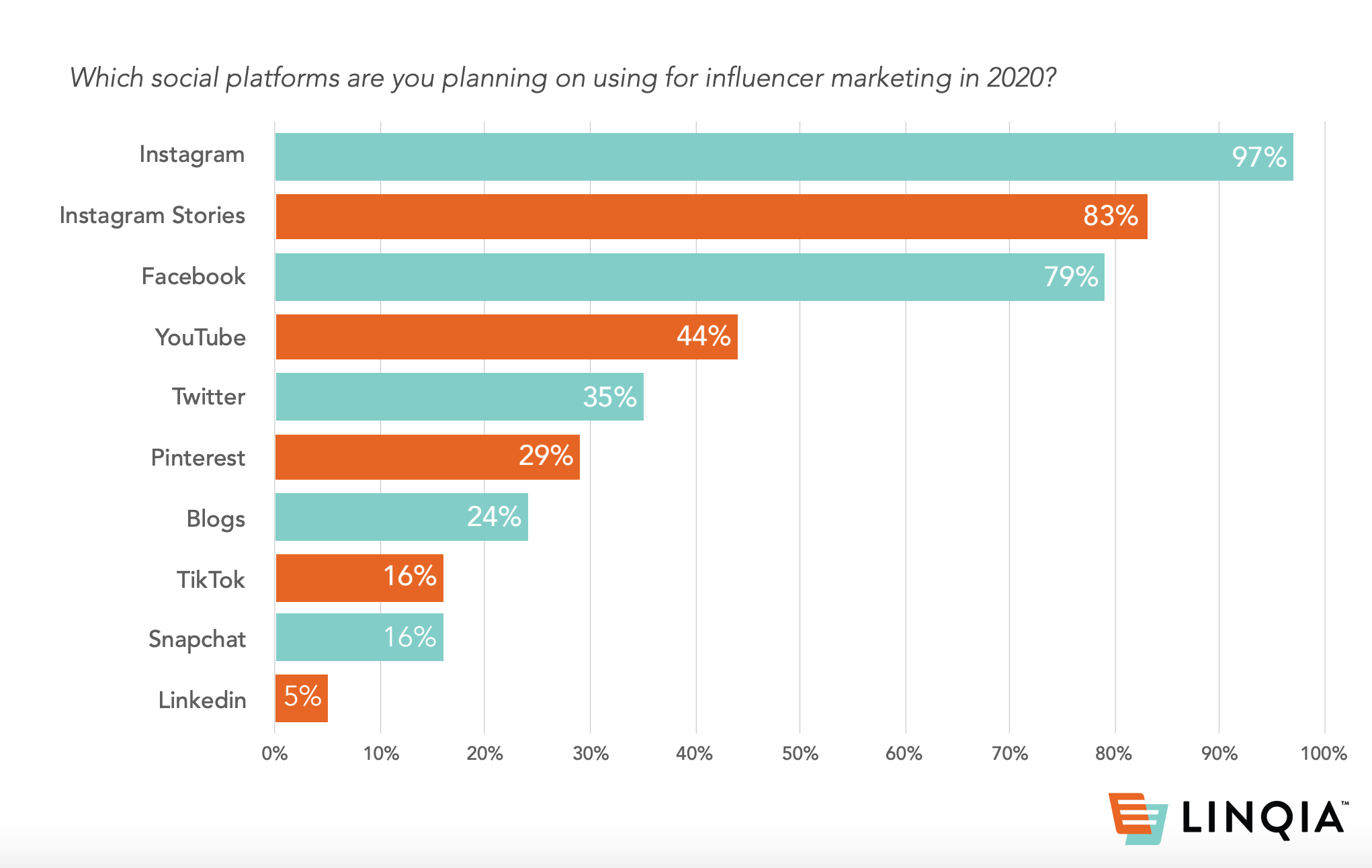
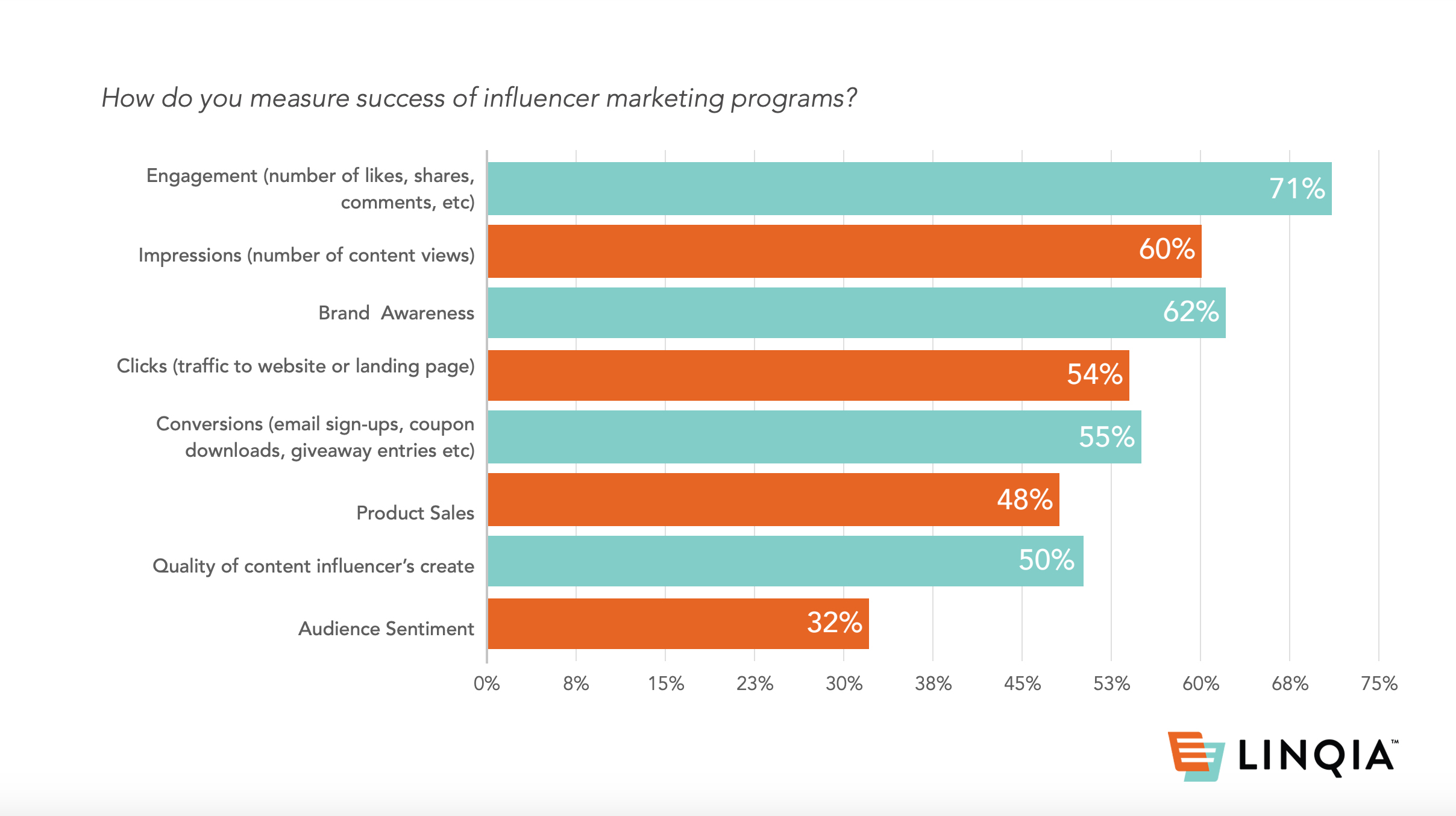
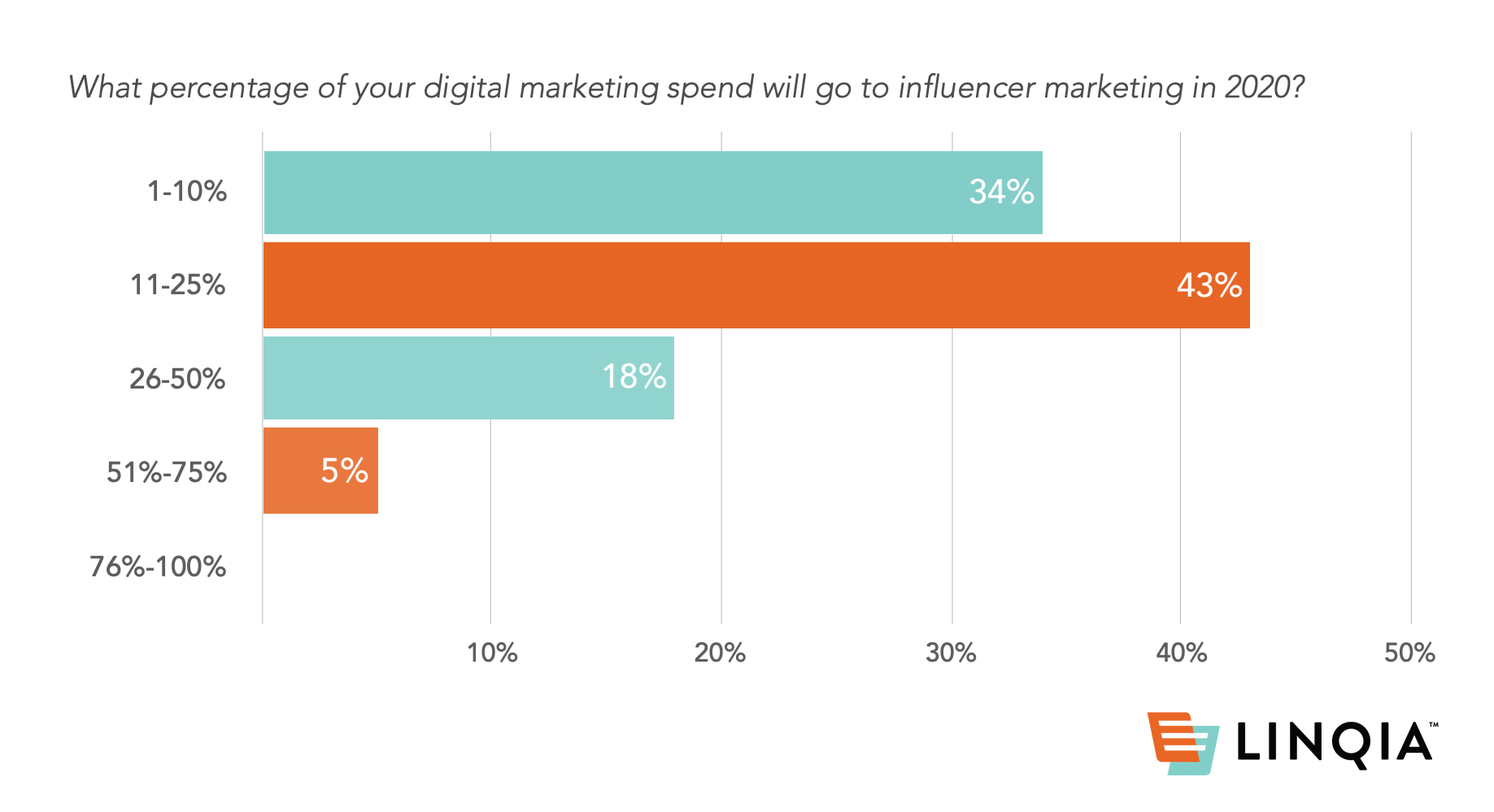
“As brands increase their influencer marketing budgets, it's clear that the industry is advancing into its growth and optimization phase. Marketers are moving away from celebrity influencers and toward authentic micro-and macro-influencers to create quality content on proven channels like Instagram, while also experimenting on newer platforms, like TikTok,” said Nader Alizadeh, CEO and co-founder of Linqia. “Quality of the content is now so important, marketers rank it above product sales as a measure of success.”
Additional findings from the survey include:
- Micro-influencers (5-100k followers) continue to grow in popularity with 78 percent of marketers saying they want to work with micro-influencers in 2020, the most selected influencer type
- Marketers prefer nano-influencers (less than 5k followers) over celebrity influencers — with 26 percent of marketers interested in working with nano-influencers compared to a 22 percent interest in celebrity
- Instagram continues to be the premier platform for influencer marketing with 97 percent of respondents planning to use it
- Marketers have high hopes for tall screens, as almost 60 percent believe vertical video will be important to very important for them in 2020 and 83 percent of marketers ranked Instagram Stories as the second most important social network platform, ahead of Facebook and YouTube
- While TikTok continues to generate buzz, only 16 percent of marketers plan to use the platform in 2020
- 88 percent of marketers plan to re-use influencer content across social, website, email and display channels
- Nearly half of marketers, 49 percent, were unaware of new guidelines from the Federal Trade Commission (FTC) about sponsorship disclosure rules
- Engagement is the most important key performance indicator for marketers, as 71 percent measure the success of a campaign on this metric. Brand awareness and impressions came in second and third at 62 percent and 60 percent respectively of how marketers measure influencer success
- Determining the ROI of marketing efforts still ranks as the number one concern for marketers with 46 percent selecting it as the main concern in 2020
To download a full copy of the report, click here. There will also be a webinar reviewing the findings on March 18 at 2 p.m. ET / 11 a.m. PT hosted by Alicia Mickelsen, Director of Marketing at Linqia. RSVP for the webinar by visiting here.
Hard Seltzers Are Shaking Up the Competition
Hard seltzers are a boon to the U.S. alcoholic beverage industry at large, and that’s shaking up the competitive landscape across the bar and restaurant scene. But while it’s hard to ignore the pace at which hard seltzers have uppended the landscape, the growth has the potential to boost other alcoholic beverages as well.
In looking at the alcoholic beverage landscape, seltzers have created a massive disruption. According to findings from Nielsen CGA, the number of consumers drinking hard seltzers at bars and restaurants increased by 73 percent between the spring and fall of 2019: That’s equivalent to around 7.5 million new drinkers. And while some of the increase reflects the entrance of consumers who recently turned 21, most new hard seltzer drinkers are switching from other alcoholic beverages.
Hard seltzers have disrupted the U.S. on-premise (bars and restaurants) space so dramatically that weekly sales now surpass those of the entire pale ale beer category. Of the consumers who identify as hard seltzer drinkers, more than half (51 percent) said they are actively choosing seltzers over their normal drink of choice when they’re out of the house, with 52 percent selecting hard seltzer instead of beer and 40 percent doing so instead of cocktails. With more brands coming to market, Americans drinking healthier and seltzer marketing efforts taking media by storm, we expect the appetite for hard seltzers in bars and restaurants to continue growing, especially as nearly three quarters (72 percent) of hard seltzer drinkers in the U.S. on-premise think they will become even more popular in the future, while fewer than one-fifth (18 percent) view them as a fad.
There is no denying that many consumers are reaching for hard seltzers instead of something else, but hard seltzers don’t have to be one-trick ponies. As such a flexible drink virtually unaffected by seasonality (82 percent say it’s suitable for all four seasons), the hard seltzer category lends itself to a draft and mixer format. More than a third (36 percent) of consumers said they would drink it on draft—and within that population, 46 percent would enjoy it on its own, 35 percent would use it as a mixer in a cocktail and 33 percent would use it as a mixer with a spirit.
This spells a big opportunity for spirit suppliers that could benefit from the growth of the hard-seltzer-as-a-mixer trend. When asked which spirit they’d pair with a hard seltzer, 69 percent of consumers said vodka, followed by 53 percent for rum, 52 percent for tequila and 45 percent for liqueurs and cordials. The consumer demand is there, which means that retailers, suppliers and distributors just need to understand the demand and deliver on the opportunity.
From bartops to pool parties, hard seltzers are ubiquitous in their growing popularity. They had a head start in the $1.65 billion U.S. off-premise space, and they continue to maintain a growth rate of 215 percent (and counting) across U.S. retail. That said, hard seltzer sales growth at bars and restaurants outpaced retail sales growth last year, amplifying the opportunity for on-premise venues in 2020.

